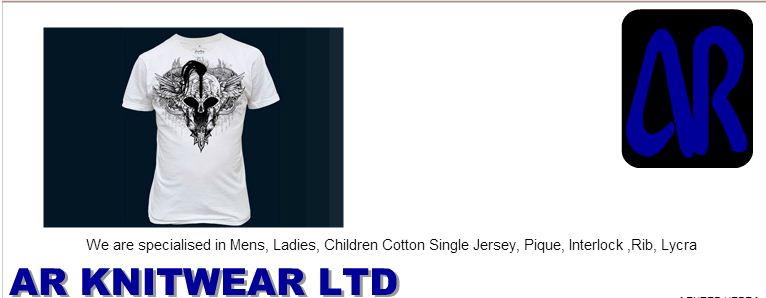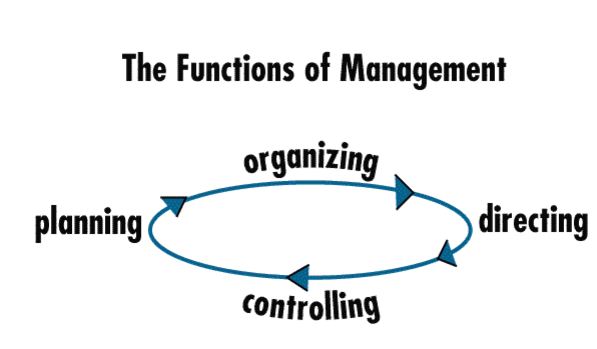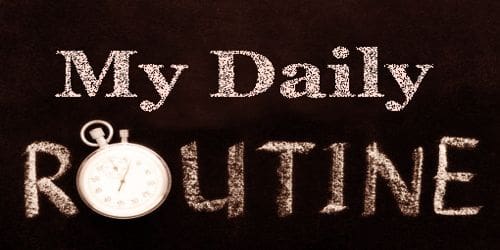Executive Summary
Management policies of the company are considered as one of the vital aspect for survival of the company. In an organization the total activities are depending on the management system, which include the performance of the company. This report contains all the information related to the management process of different section of the company. While we were writing this report our intension was to know the existing management process of AR Knitwear Limited from which we have taken the idea to develop our term paper on the roles and responsibilities at different levels of manager and to compare how is it similar to our bookish knowledge.
We have divided this term paper into three phases. These are,
The theoretical concept of manager’s roles and responsibilities.
The practical scenario of AR Knitwear Limited.
And the last of all, the analyze about comparing between the theoretical knowledge & practical knowledge of management as well as this chapter shows a comparison between theoretical knowledge & practical implementation about managers roles & responsibilities at different levels managers of AR Knitwear Limited.
Finally after comparing all sides we have found that, AR Knitwear Limited emphasizes in bookish knowledge/education and experiences, because they both are important to operate an organization.
Methodology
We have divided our source into primary and secondary sources.
Primary:
Interview: We go to some organization and get information about “Roles and Responsibilities of Managers at Different Levels of the organizational hierarchy”.
Observation: We observed the organizational hierarchy of AR Knitwear Limited and saw the roles and responsibilities of managers at different levels of the organizational hierarchy.
Secondary source:
Internet:
www.arknitwear.com
www.google.com
Books :
Management: By Ricky W Griffin; 7th & 8th Edition
Management-A Global Perspective: By Weihrich, Heinz & Koontz, 10th Edition.
Introduction
Origin of Term Paper
Our course instructor Chowdhury Shifat E Mohsinhas assigned us the report on “The Roles and Responsibilities of Managers at different levels of the organizational hierarchy” to gain some practical knowledge about management. This term paper is a part of our course Business communication; this study really provides us an opportunity to know about the management of an organization.
Objectives of the Term Paper
This paper has three specific objectives, which again obtain three sub points. First one is to know the theoretical knowledge of management of an organization.
Another objective of the paper is to observe the practical use of management of an organization. This part we observe the process of management, hierarchy of management as well responsibilities and skills of managers.
Finally, the comparison of theoretical knowledge of management and practical use of management in an organization. It is basically helps us to find out the importance of theory about management in practical life.
Organization
An organization is a group of people working together in structure and coordinated fashion to achieve set of goals. The goals may include such things as profit, the discovery of knowledge, national defense, and co-ordination of various local charities or social satisfaction. Because they play such a major role in our lives, understanding how organizations operate and how they are managed is important.
Management
Management is a complex, challenging, and exciting process. It is a set of activities (including planning and decision making, organizing, leading, and controlling) directed at an organization’s resources (human, financial, physical, and information) with the aim of achieving organizational goals in an efficient and effective manner. Here, ‘efficient’ means using resources wisely and also in cost-effective way and ‘effective’ means making the right decisions and successfully implementing them.
Now let’s read a great message by Christopher Galvin ——-
“Management is a journey, not a destination.”
Management can be define in more ways –
Management is the process of designing and maintaining an environment in which individuals working together in groups efficiently accomplish selected aims. Management is the process undertaken by one or more persons to co-ordinate the activities of other persons to achieve results not attainable if any one person acting alone.
Management Process
Management involves four basic activities-planning and decision making, organizing, leading, and controlling. Although there is a basic for describing those activities in this sequence(as included by the solid arrows), most managers engage in more than one activity at a time and often move back and front between the activities in unpredictable ways(as shows by the dotted arrows).
Management Function that involves the process of defining goals, establishing strategic for achieving those goals and developing plans to integrate and coordinate activities. Planning and decision making help maintain managerial effectiveness by serving as guides for future activities.
Organizing
Management function that involves the process of determining what tasks are to be done, who is to do them, how the tasks are to be grouped, who reports to whom, and where decisions are to be made. The basic elements of organizing are job design, departmentalization, authority relationships, and span of control, and line and staff roles.
Management function that involves monitoring, subordinates, influencing individuals or teams as they work, selecting the most effective communication channels, or dealing in any way with employee behavior issues.
Controlling
Management function that involves monitoring actual performance, comparing actual to standard and taking action if necessary. As the organization moves toward its goals, managers must monitor progress to ensure that it is performing so that it arrives at its ‘destination’ at the appointed time. Controlling helps ensure the effectiveness and efficiency needed for successful management.
Different Levels of Managers
Someone who works with and through other people by coordinating their work activities in order to accomplish organizational goals. Managers can be differentiated according to their level in the organization. Although large organizations typically have several levels of management, the most common view considers three basic levels: top, middle and first-line managers.
Top Managers
Managers at or near the top level of the organization who are responsible for making organization-wide decisions and establishing the goals and plans that affect the entire organization. Titles found in this group include president, vice president, and chief executive officer (CEO). Top managers create the organization’s goals, overall strategy, and operating policies.
Organizational hierarchy in Decision implementing
Mangers between the top level and first-line level of the organization who manage the work of first-line managers. Middle management is probably the largest group of managers in most organizations. Common middle-management titles include plant manager, operations manager, and division head.
First-line Managers
Managers at the lowest level of the organization who manage the work of non managerial employees who are involved with the production or creation of the organization’s products. Common titles for first-line managers are supervisor, coordinator, and office manager. Positions such as these are often the first held by employees who enter management from the ranks of operating personnel.
Managing in different areas of the organization
Many type of managers are work in an organization and they are work in many area of the organization. As a rustle many types of managers call them.
Marketing managers
Marketing manager’s work in the market related areas. They consume their organization’s products or services to the consumers and clients. These areas include new product development, promotion and distribution.
Financial manager
Financial managers deal primarily with an organization’s financial resources. They are responsible for accounting, cash management and investments.
Operations managers
Operations managers are related with creating and managing the systems that create an organizations products and services. Operation managers are responsible for production control, inventory control, quality control, and plant layout and sit selection.
Human resource managers
Human resource managers are responsible for hiring and developing employees. They are typically involved in human resource planning, selecting employees, training and development, designing compensation and benefit systems.
Decision-making process
Types of Decisions
Decisions are two types. They are-
Programmed decision
A decision that is fairly structured or recurs with some frequency (or both).
Non-programmed decision
A decision that is relatively unstructured and occurs much less often than a programmed decision.
Managerial Roles
In carrying out the five major management functions, Mangers perform various roles. A role is a set of expected behaviors. A, manager is expected to serve a number of roles and to be a good role model. First, managers perform a number of interpersonal activities by virtue of their position in the managerial hierarchy. Second, the communications that flow to and from managers make it necessary for them to process information. Third, the fact that a manager is a conduit and communicator means decisions must be made; managers are the key decision makers in organizations.
Interpersonal Roles.
Figurehead
First, the manager is often asked to serve as a figurehead- taking visitors to dinner, attending ribbon-cutting ceremonies, and the like. These activities are typically more ceremonial and symbolic than substantive.
Leader
The manager is also asked to serve as a leader- hiring, training, and motivating employees. A manger who formally or informally shows subordinates how to complete tasks and how to perform under pressure is leading.
Liaison
Finally, managers can have a liaison role. This role often involves serving as a coordinator or link between people, groups, or organizations. It also involves acknowledging mail, doing external board work, performing other activities that involve outsiders.
Informational Roles
The roles of monitor, disseminator, and spokesperson, all of which involve the processing of information.
Monitor
The first informational role is that of monitor, one who actively seeks information that may be of value. The manager questions subordinates, is receptive to unsolicited information, and attempts to be as well informed as possible.
Disseminator
The manager is also a disseminator of information, transmitting relevant information back to others in the workplace. When the roles of monitor and disseminator are viewed together, the manager emerges as a vital link in the organization’s chain of communication.
Spokesperson
The spokesperson formally relays information to people outside the unit or outside the organization. Although the roles of spokesperson and figurehead are similar, there is one basic difference between them. When a manger acts as a figurehead, the manager’s presence as a symbol of the organization is what is of interest. In the spokesperson role, however the manager carries information and communicates it to others in a formal sense.
Decisional Roles
The roles of entrepreneur, disturbance handler, resource allocator, and negotiator, all of which relate primarily to making decisions.
Entrepreneur
The manager has the role of entrepreneur, the voluntary initiator of change. Basically entrepreneur is a person who engages in the process of planning, organizing, operating, and assuming the risk of a business venture.
Disturbance Handler
A second decisional role is initiated not by the manager but by some other individual or group. The manager responds to her role as disturbance handler by handling such problems as strikes, copyright infringements, or problems in public relations or corporate image.
Resource Allocator
The third decisional role is that of resource allocator. As resource allocator, the manager decides how resources are distributed, and with whom he or she will work most closely. For example, a manager typically allocates the funds in the unit’s operating budget among the unit’s members and projects.
Negotiator
A forth decisional role is that of negotiator. In this role the manager enters into negotiations with other groups or organizations as a representative of the company. For example, managers may negotiate a union contract, an agreement with a consultant or a long-term relationship with a supplier.
Becoming a Manager
How does one acquire the skills necessary to blend the science and art of management to become successful manager? Although there are as many variations as there are managers, the most common path involves a combination of education and experience.
Phase: 2
Different levels of Managers
Top managers
Top managers of AR Knitwear are not same as other organization. AR Knitwear top managers are board of directors, M.D, Company secretary, directors and GM of coordination department.
Mid managers
We get from our visit at the company and from its organ gram that marketing manager, sales manager, and Purchase managers are mid level managers. They play a vital role in the organization.
First line manager
Through our visit at AR Knitwear we came to know that its first line managers are assistant managers of those departments and senior officers where assistant managers are not posted.
Roles and Responsibilities of AR Knitwear Ltd Managers
Interpersonal Roles
Figurehead
Top level managers of AR Knitwear Ltd. play the role of Figurehead. They represent the organization outside the organization. They attend different meetings with governments and attending ribbon-cutting ceremonies of the opening day of a new plant.
Leader
At AR Knitwear Ltd. top level, mid level and first-line managers play important role as leader. They shows subordinates how to work under pressure and how to complete tasks. Le3desship role is mainly for top and mid managers for their job pattern.
Liaison
Managers of coordination department of AR Knitwear Ltd. work as coordinator and link between people, groups, or organization. Thus they play the role of liaison. Other mid managers like H.R.D department, Foreign Purchase, C&F manager also play a vital role of liaison.
Informational Roles
Monitor
Every managers of AR Knitwear Ltd. work as a monitor. They actively seek information from subordinates by asking them question, receiving information. The main monitor is performed by sixth monthly, three monthly and monthly meeting between top managers and mid manager.
Disseminator
Managers transmitted information to other departments. Thus managers play the role of disseminator. Mid manager of AR Knitwear Ltd plays the main role of disseminator as they have to fulfill the target and make it done by subordinates. All managers in mid level have to follow these roles strictly.
Spokesperson
Basically, top level managers play the role of spokesperson at AR Knitwear Ltd Ltd. They relay information to people outside the unit or outside the organization for further plan. Here the managers not always follow the formal process of spokesperson. Sometimes they provide information in an informal way like through telephone.
Decisional Roles
Entrepreneur
Top managers of AR Knitwear Ltd are not only the play the role of entrepreneur but also mid managers play a vital role as entrepreneur. Top Managers are encouraged and allowed to come with new ideas for innovation. Thus, managers respond to the role of entrepreneur.
Disturbance Handler
Managers play the role of disturbance handler by handling many problems. They handle the problem in public relations like resolve conflict between two subordinates as well as maintenance of corporate structure. Operation Manager and HRD Manager play this role strictly.
Resource Allocator
Top managers of AR Knitwear Ltd locate the huge amount of resources in different projects. Then mid managers divide those resources and locate those resources where ever and when ever needed. Especially, managers who are working in finance department play the role of resource allocator. They review and revise budgets request and allocates the fund.
Negotiator
As negotiator most of the managers plays a vital role. What we mainly find out is foreign purchase department, purchase department, Cutting & forrowarding department and Tax matters & company affairs department have to negotiate most.
Different department of AR Knitwear Ltd.
Managerial Roles
Top manager
The responsibilities of top managers are-
Set the organizational goal.
Set overall strategic plan and operational policies.
Execute other organization and deal with government.
Monitoring overall organizational performance and Productivities.
Meet with foreign customers and investors.
So here we find no basic differences from theoretical knowledge.
Mid Managers
The responsibilities of Middle mangers
Responsibilities of mid managers at AR Knitwear Ltd are-
Implementing the policies and plans set by the top managers.
providing information and ideas for making a plan or setting a
Organizational goal.
Giving instruction to subordinates and supervises them.
Coordinating among subordinates.
Observing overall market situation and making personal plan according to the situation.
Finding new areas to invest and improve
First Line Managers
We see that the first line managers of AR Knitwear Ltd have the
Responsibilities to-
Assign to and review work of subordinates, train and work effectively with subordinates from a variety of backgrounds and with different levels/areas of training.
Accomplish the quality and quantity of work expected within set limits of cost and time.
Plan own work and carry out assignments effectively.
Communicate with others effectively both orally and in writing in working out solutions to problems or questions relating to the work.
Understand and further management goals as these affect day-to-day work operations.
Times Spend In Management Process
AR Knitwear Ltd. makes a broad plan for one or two years in their board meeting. Then they review the plan half yearly, quarterly and monthly in different meetings. Every manager also makes their monthly, weekly and daily planes. Managers do the planning whenever they get time in a day.
Top level managers spend most of the times in planning- decision making and organizing. They also spend time in leading.
Mid level managers mainly spend times in organization and leading. They also spend small time in planning and controlling.
First-level managers spend many times in leading and controlling. They also spend small times in organizing and planning.
Top Managers
How decision is implemented
By following Organizational hierarchy AR Knitwear Ltd. implements its decisions. It’s process of implementing decision go from top level to root level On the contrary, decision go from root level to top level in a similar way.
Organizational hierarchy in Decision implementing
Skills of Managers
Technical Skills
In AR Knitwear Ltd not only the first line managers but also the some mid managers need these skills. Especially Operation Manager and IT manager required these skills too much.
Inter personal Skills
In AR Knitwear Ltd we see that both top managers and some mid managers required these skills. Like HRD manager, Foreign Purchase manager, clearing and Forwarding manager, Purchase Manager, Marketing manager need these skills too much.
Conceptual skills
In AR Knitwear Ltd we also see that these skills are for both top and mid managers. They all need this skills too much as they have to understand different situation and different plans.
Communication skills
It is for mid managers and mid managers of AR Knitwear Ltd need these skills. Without this skills manager can’t fulfill their target goal or plan.
Decision making Skills
At AR Knitwear Ltd it is important for both top and mid mangers. Because, both two managers have to make decisions in different situation.
Phase: 3
Analyzing the difference of Management Process
When we collected information from our organization we find some different way that organization follows in their management process.
These differences are described below:
Planning and decision-making
What we have learned from our books is that mainly top managers are involved in planning process, others planning are not too much important. But what we have seen at AR Knitwear is that with top managers mid managers are planning FOR the organization and some cases mid managers are making the most important planning.
Organizing
Organizing is allocating resources to make the organization effective to achieve the goal of the organization. That’s seems to be a work of top level manager, but at AR Knitwear organizing is so important for mid level managers because they make their own plan to archive the organizational goal proposed by them and set by top level managers.
Leading
Leading is the most important and challenging issue in managerial job. In AR Knitwear leading is not only for the top-level managers but also for every level of management. Managers have to archive the goal set by the top managers.
Controlling
As we described at phase 2 that controlling system is different from other organization in AR Knitwear. Because here top managers just monitor and control the mid manager whether the goal is achieved or not by meeting after three month and six months. But to achieve the main organizational goals mid managers mainly observe, control and make corrections in work.
Difference of theoretical and practical knowledge about- different level of management
As we know from our bookish knowledge that there are three levels of manager of an organization. We also find out that AR Knitwear Ltd also have three different level of management as it is an ISO recognized organization. But what we find out here are some differences in the position of managers at different levels. Differences are described below.
Top managers
From our books we know that CEO, board of directors is the top managers. But at AR Knitwear top managers are board of directors, M.D, Company secretary, directors and GM of coordination department. So here we get some differences.
Mid managers
Plant manager, Operations manager and division head are defined as mid manager in our academic books. But what we get from our visit is different because here marketing manager, sales manager, and Purchase managers are mid level managers.
First line manager
Academic knowledge says that first line managers are marketing manager, sales manager, and Purchase manager. But by our visit at AR Knitwear we came to know that its first line managers are assistant managers of those departments and senior officers where assistant managers are not posted.
Analyzing the differences of Managerial Roles
From our theoretical prospective we know managers have to Perform ten basic managerial roles. At AR Knitwear managers also have to perform those roles but there are many roles behind those. On the other hand some of those roles are not for every one because some groups of managers are assigned to perform specific role.
Interpersonal roles
Figurehead
• Basically we don’t find any differences here because top managers like MD, board of Directors have this roles. The top managers always represent the organization and attend the opening ceremony of new plant.
Leader
• Leading is hiring, training and motivating employees to get the job done by mainly top managers as mention at our books. It’s never for top or mid managers but also for line managers and for even lower level at AR Knitwear. That means some how most managers are leader.
Liaison
• At AR Knitwear all managers have liaison roles but in some departments’ liaison roles are too important. H.R.D department and Coordinating Department perform this role.
Informational
Monitor
• We know from our bookish knowledge that top managers
mainly monitor and collect information. But what we find
at our visited organization is that top managers monitor.
Disseminator
• As described at monitor role not top level but mid level do
the main job of monitor and disseminator. As disseminator
role is performed by mid level AR Knitwear managers
can do finish job effectively.
Spokesperson
• According to books spokesperson is a manager who carries information and communicates it to other in a formal way. But what we find on that office is not at all formal always. Sometimes they provide information in an informal way like through telephone.
Decisional
Entrepreneur
• It is a managerial role of developing new idea for innovation. At AR Knitwear all managers have that role. But as it is a manufacturing company so here it has a difference, and that is it has a group of employees for the development of product. It also does research to develop a new product.
Disturbance Handler
• Here we find no difference at all because more or less all
managers have to work as a disturb handler. General
Manager of factory at AR Knitwear mainly has to
face this kind of problems.
Resource allocator
• As we know from books managers of AR Knitwear have the same roles. Here we got no difference at all except a little change implementations of this.
Negotiator
• According to book role of negotiator is for all managers. But what we mainly find out is foreign purchase department, purchase department, C&f department and Tax matters & company affairs department have to negotiate most.
Differences between the Responsibilities of different level Managers of AR Knitwear Ltd and theoretical level of managers.
Managers of AR Knitwear Ltd have different responsibilities for the company. Responsibilities they have are discussed below.
Top manager
As we see that the responsibilities of top managers are-
Set the organizational goal.
Set overall strategic plan and operational policies.
Execute other organization and deal with government.
Monitoring overall organizational performance and Productivities.
Meet with foreign customers and investors.
So here we find no basic differences from theoretical knowledge.
Mid Managers:
Responsibilities of mid managers at AR Knitwear Ltd are-
Implementing the policies and plans set by the top managers.
Providing information and ideas for making a plan or setting a organizational goal.
Giving instruction to subordinates and supervises them.
Coordinating among subordinates.
Observing overall market situation and making personal plan according to the situation.
Finding new areas to invest and improve.
So here we find some basic differences between bookish and practical knowledge. Because here mid managers have more responsibilities then we know from academic knowledge
First Line Managers:
We see that managers of AR Knitwear Ltd have the responsibilities to-
Assign to and review work of subordinates, train and work effectively with subordinates from a variety of backgrounds and with different levels/areas of training.
Accomplish the quality and quantity of work expected within set limits of cost and time.
Plan own work and carry out assignments effectively.
Communicate with others effectively both orally and in writing in working out solutions to problems or questions relating to the work.
Understand and further management goals as these affect day-to-day work operations.
So here is also some differences we can find out because thy have more responsibilities then we know.
Time Management of different level of management
Our collected data about AR Knitwear shows some differences about time management of different level of managers. Managers of AR Knitwear manage their time effectively, and what we observe in different level are discussed level wise.
Top managers
As we know from our academic knowledge that top managers spend a major part of their time in planning process as well the organization’s goals, overall strategy, and operating policies.
Mid Managers
Mid managers main job is to implement the plan set by the top managers. So they have to spend most of their time in organizing, leading the subordinates and controlling them according to our theoretical knowledge. It is also true for AR Knitwear Ltd, but there are some disadvantages as well.
First Line Manager
Managers at the lower level of the organization who manage the work of non managerial employees who are involved with the production of the organization’s products. So their main job is to organize and lead other. First line manager of AR Knitwear Ltd have to maintain their time according to their work. By a chart we are showing this.
Recommendations
AR Knitwear Ltd is an ISO recognized organization and it is well organized as well but it has some draw bakes also. So we like to add some recommendation for the company. Our recommendations are-
The company should practice more corporate culture.
Young employees with modern knowledge should be introduced to improve its over all performance.
New technology should introduce though it has a special IT department but still now they should reduce paper work.
More involvement of lower level managers should be ensure in planning and decision making process.
Limitations
The following facts obstructed our endeavors to create a well-organized term paper on managerial roles and skills.
To do such kind of project we should consider minimum two to four company, which we couldn’t because of time constraint.
Lack of books, specifically focuses on managerial hierarchy in organization, in the library.
Another limitation is the lack of intellectual thought and analytical ability to make it the most perfect one.



















